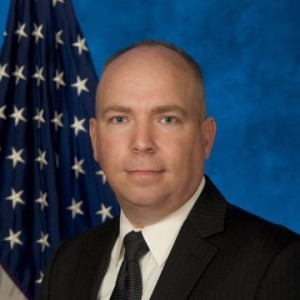

Jason Gray, the Education Department’s CIO and the co-chairman of the CIO Council’s IT Workforce Committee, said there are four main goals for the upcoming...
Just by the early numbers, the CIO Council’s hiring fair happening on Nov. 6 and 7 in Silver Spring, Maryland is a success.
Currently, 30 agencies are reviewing about 2,500 resumes of applicants interested in working for the federal government in cybersecurity or technology jobs.
But the raw numbers alone aren’t the main way the CIO Council is measuring their success.
Jason Gray, the chief information officer of the Education Department and the co-chairman of the CIO Council’s IT Workforce Committee, said the committee has four main goals.
“The council is actually capturing a lot of other metrics as part of this hiring event. The number of agencies, demographics, where people are coming in from, whether remote or local, and then after the event is over, we will be putting an after action report on CIO.gov on the various metrics targets we achieved, as well as lessons learned,” said Gray during an interview on Ask the CIO.
Among the metrics that many will look at is the time to offer. Gray said currently the average time to offer is about 15 weeks, so the event’s goal is to cut that time in half.

He said the reason the council decided on the six-to-eight week goal is to better align with private-sector timelines.
“The last two weeks I’ve had that experience where I’ve gone to make tentative offers to individuals only to find out the time took so long that they’ve actually found other jobs,” he said. “In one case with another agency, which is great for government, but in the other case, private industry.”
Gray said Education didn’t end up losing out too much on the skill sets of their hires. But that doesn’t always happen and many times agencies miss out on their top candidates.
The effort to improve the time-to-hire started in 2010. The Office of Personnel Management initially established a goal of 80 days, but in 2014, changed from just raw time to time and quality of candidates.
The other challenge agencies continue to face is they have 105 different hiring authorities and most of those are not used by agencies on a regular basis. The CIO Council’s efforts are taking advantage of the direct hire authority for cyber professionals, but for IT professionals, agencies are using the competitive procedures, which have long been criticized as taking too long.
“We were looking at ways to not only capitalize on what other agencies had done, but we realized that it takes a lot of effort to have different HR components in each of the agencies put together job announcements and a lot of the background work that needs to be done,” Gray said. “We realized by doing an agency-wide hiring event, we could streamline that with three vacancy announcements that everyone could leverage the same certificates for hiring opportunities.”
Gray said the IT Workforce Committee and OPM are meeting weekly with the participating agencies to address any hiring fair questions.
“Agencies can request a list of candidates before, during and after the event concludes,” he said. “We currently are in the review phase of this process where most agencies are reviewing applications to determine if they meet all required qualifications. The next phase will be to invite qualified candidates for interviews during the hiring event, with a goal of making tentative job offers if the candidates are found suitable for the position.”
Gray, who has been with Education for about 17 months, said his agency will take advantage of the hiring fair to meet critical needs as well.
One of his main priorities is organizational health, where he focuses on the current and future workforce.
“We put together a staffing capability matrix. It basically maps out each of the positions in each of the areas as well as the functional capabilities for each position,” Gray said. “It was really to get the ‘as-is’ picture of what is does our workforce look like and what are our skillsets from a capabilities standpoint. This matrix, which is done for the entire organization, is leveraged to discuss hiring exceptions, which positions I need, what they are providing and what happens if I don’t get them, as well as training decisions in terms of how am I making sure I’m providing the right type of training for the existing staff.”
At the same time, Gray said he’s also focused on employee engagement within the CIO’s office. He said the 2017 Federal Employee Viewpoint Survey results will show that his office improved in all of the eight indices of the survey and most of the categories. Across those eight areas, the CIO’s office saw a double-digit improvement in more than half of them.
“Having a health workforce in an organization is absolutely critical to sustaining and creating a sustainable workforce where people want to stay because they are valued and are delivering capability,” he said. “I have done one-on-ones with the employees. I’ve gone to all of their staff meetings. I have a biweekly brown-bag lunch where I invite people from different divisions to have lunch where there is no agenda, just a free-flowing conversation. We also have quarterly all-staff meetings where we do team-building activities.”
Along with the organizational health priority, Gray said he’s also focused on cybersecurity, including moving to phase two of the continuous diagnostics and mitigation (CDM) program, and implementing the Federal IT Acquisition Reform Act (FITARA).
“We kicked off phase two activities a couple of weeks ago. We’ve already done the ‘as-is’ state for credentialing management and the ‘to-be,’ and we are currently looking at developing the pilot for the ‘to-be’ solution requirements,” Gray said. “When I look at the other areas, FITARA as well, the last official scorecard that went out we raised from a D to a C-plus. I know that changes are coming and we have to adapt to those changes. We are working actively to make sure that we are doing the things that really are the intent behind FITARA, making sure that I am accountable, I know what’s going on from a budget, planning, execution standpoint, as well as all of the other pieces that are baked into FITARA.”
Copyright © 2025 Federal News Network. All rights reserved. This website is not intended for users located within the European Economic Area.
Jason Miller is executive editor of Federal News Network and directs news coverage on the people, policy and programs of the federal government.
Follow @jmillerWFED

